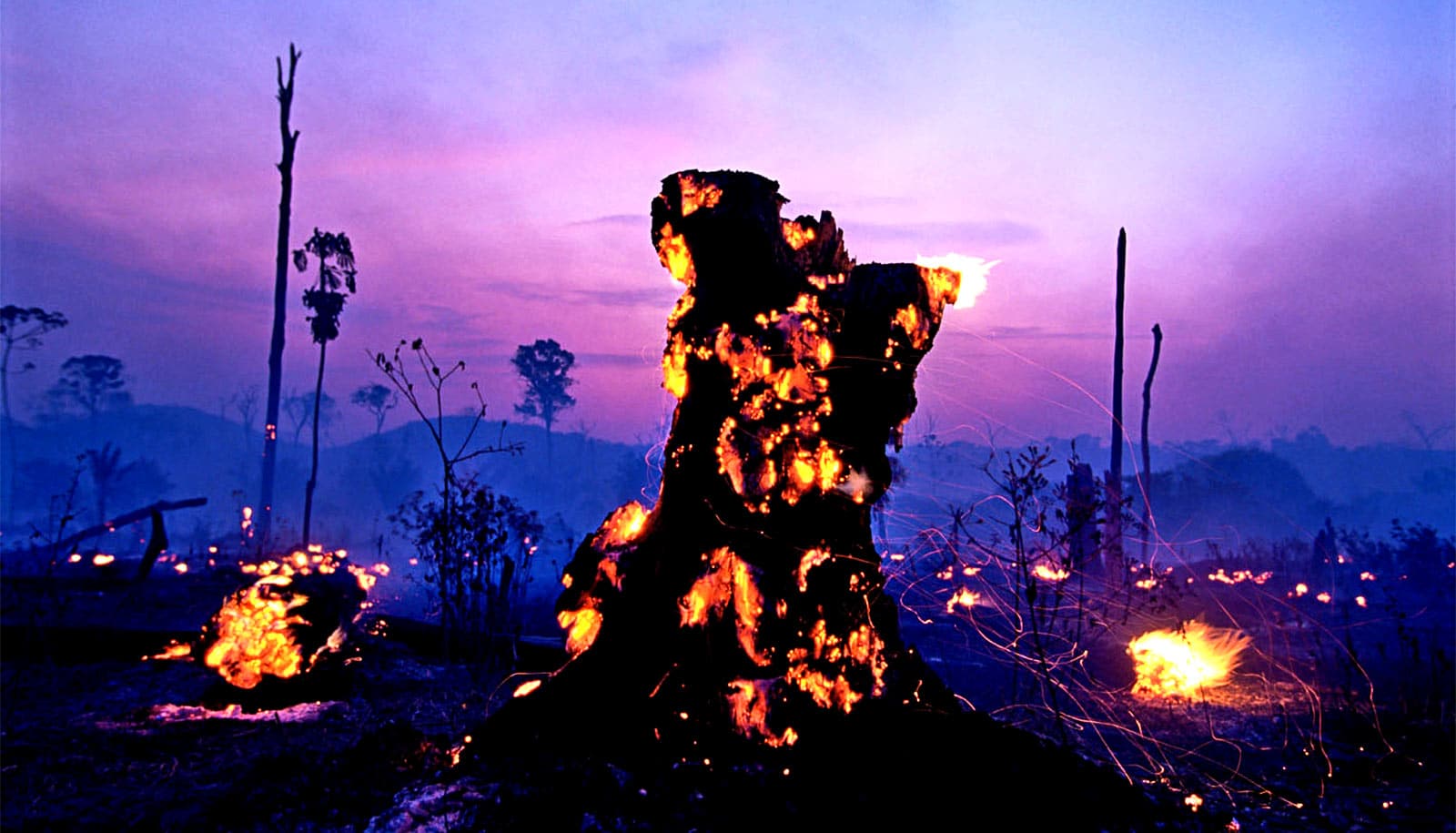Improving health care in rural Indonesia reduced incentives for illegal logging in a nearby national park, averting millions of dollars’ worth of atmospheric carbon emissions, a study finds.
The finding indicates that accessible and affordable health care could be a key tool for addressing the climate crisis.
Although the link may not be obvious, health care and climate change—two issues that pose major challenges around the world—are more connected than people may realize.
The analysis, published in the Proceedings of the National Academy of Sciences, finds that deforestation in the national park declined 70% in the 10 years after an affordable health clinic opened in the area. This equates to more than $65 million worth of avoided carbon emissions when translated to the European carbon market, the study reports.
“…we were continually amazed that the data suggested such a strong link between improvements in health care access and tropical forest conservation.”
“The results illustrate a strong link between human health and conservation in tropical forests in the developing world,” says Andy MacDonald, assistant researcher at the Earth Research Institute at the University of California, Santa Barbara.
The Indonesian clinic accepts barter as payment and gives discounts to villages based on community-wide reductions in logging. Given its success, it could provide a blueprint for preserving the world’s biodiverse carbon sinks while reducing poverty and illness.
“This innovative model has clear global health implications,” says coauthor Michele Barry, senior associate dean of global health at Stanford University and director of the Center for Innovation in Global Health. “Health and climate can and should be addressed in unison, and done in coordination with and respect for local communities.”
Every second, more than 100 trees disappear from tropical forests around the world. These forests, some of the world’s most important carbon reservoirs, are crucial to slowing climate change and mass extinction.
The current paradigm for conserving tropical forests—establishing protected areas—often excludes and disenfranchises local communities. This failure to address people’s needs can lead communities with few economic alternatives to illegally log and convert the land. Lack of access to high-quality, affordable health care can compound the problem by perpetuating cycles of poor health and expanding out-of-pocket costs.
Health care access and climate change
With this in mind, the nonprofit organizations Alam Sehat Lestari and Health In Harmony in 2007 established a health care clinic adjacent to Gunung Palung National Park in West Kalimantan, Indonesia, with the support of the local government. The clinic was able to serve thousands of patients by accepting a range of alternative payments, such as tree seedlings, handicrafts, and labor—an approach they created in collaboration with the communities themselves.
Through agreements with most of the region’s district leaders, the clinic also provided discounts to villages that could show evidence of reductions in illegal logging. Between 1985 and 2001, this region had lost 60% of its forest to this activity. In addition to affordable health care, the intervention provided training in sustainable, organic agriculture and a chainsaw buyback program.
Researchers worked with the two non-profits to analyze more than 10 years of the clinic’s patient health records, coupled with satellite observations of forest cover over that time.
The medical care led to a significant decline in a range of diseases such as malaria, tuberculosis, and diabetes. At the same time, satellite images of the national park showed a 70% reduction in deforestation, compared to forest loss at control sites, an amount equivalent to more than 6,770 acres of rainforest.
“We didn’t know what to expect when we started evaluating the program’s health and conservation impacts, but we were continually amazed that the data suggested such a strong link between improvements in health care access and tropical forest conservation,” says lead author Isabel Jones, who recently earned her doctorate in biology at Stanford. Looking more closely at community-level logging rates, the researchers found that the greatest drop-offs in logging occurred adjacent to villages with the highest rates of clinic usage.
Indigenous and local input
“This is a case study of how to design, implement, and evaluate a planetary health intervention that addresses human health and the health of rainforests on which our health depends,” says coauthor Susanne Sokolow, a senior research scientist at Stanford.
Globally, about 35% of protected areas are traditionally owned, managed, used, or occupied by Indigenous and local communities. Yet the perspective and guidance of Indigenous peoples and local communities are rarely involved in the design of conservation and climate mitigation programs. By contrast, the Indonesian clinic’s success grew out of the early and continued input of local communities who identified the mechanisms driving health and environmental problems as well as possible solutions.
Such holistic approaches can have greater long-term effects by preserving and restoring the ecosystem services that protect human health. These include natural filtering processes that reduce the risk of waterborne diseases and shade-providing forest canopies that reduce ground temperature and heat-related illnesses.
“The data support two important conclusions: human health is integral to the conservation of nature and vice versa, and we need to listen to the guidance of rainforest communities who know best how to live in balance with their forests,” says Monica Nirmala, the executive director of the clinic from 2014 to 2018 and current board member of Health In Harmony.
The clinic in West Kalimantan is still active, and the researchers are currently working on a follow-up project to see whether it and similar interventions in Indonesia have alleviated some of the shock from COVID-19 both on human health and deforestation.
“We would expect illegal logging activity to respond to changes in timber market prices or loss of income associated with COVID-19,” MacDonald says. “We want to know whether the interventions buffered communities against these effects, as well as whether they increased the communities’ resilience in terms of health and wellbeing.
“Health in Harmony is also expanding to Madagascar and Brazil,” he adds, “and we want to be able to robustly evaluate the impacts of their interventions there.”
Additional coauthors are from North Carolina State University Raleigh, Oregon Health and Science University, Natural Capital Advisors, and the two NGOs involved in the intervention.
Source: UC Santa Barbara



